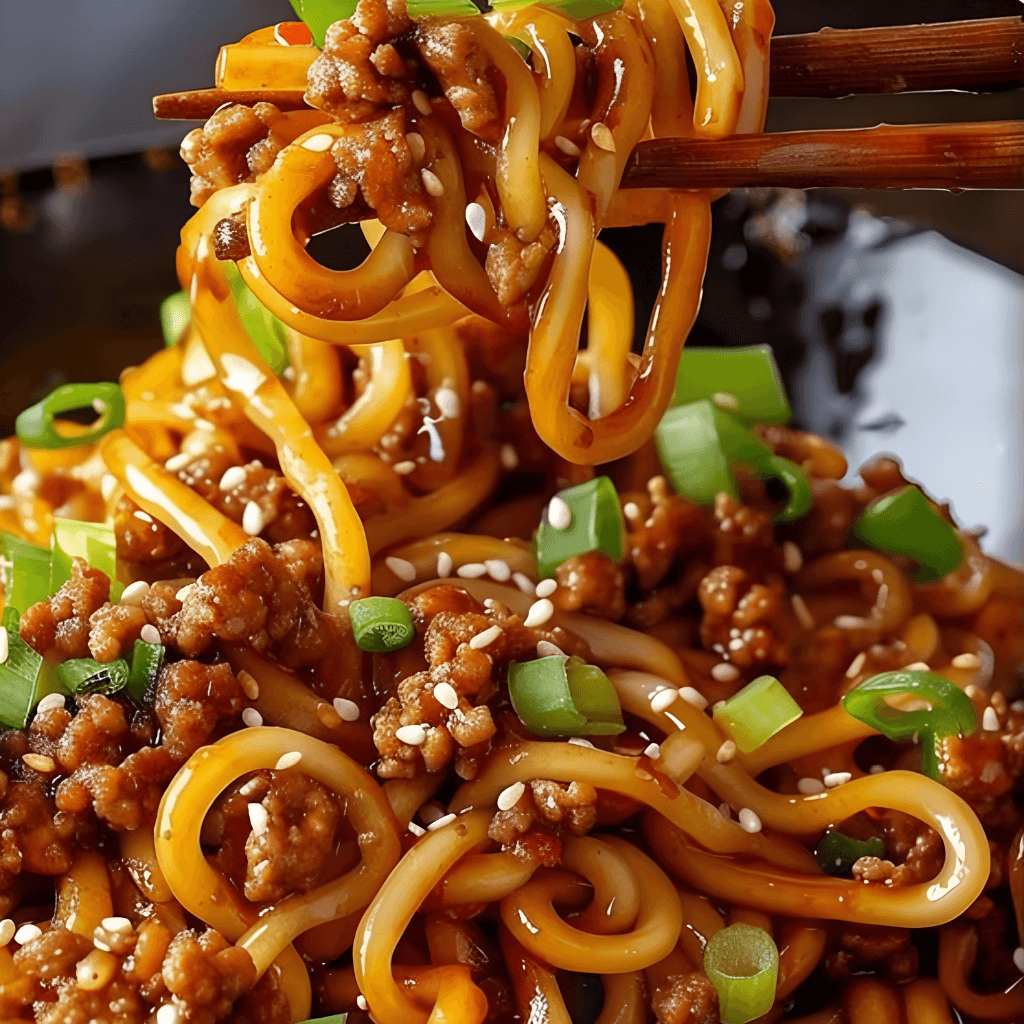
Welcome to a flavor explosion in every single bite! If you’re searching for a meal that perfectly balances sweet and savory, is incredibly satisfying, and can be on your dinner table in about 30 minutes, then look no further. This Mongolian Ground Beef Noodles recipe is a game-changer for busy weeknights, transforming simple ground beef and pasta into a restaurant-quality dish that will have the whole family asking for seconds. It’s the ultimate homemade takeout experience.
This dish promises a journey of textures and tastes, from the hearty, perfectly browned ground beef to the slick, glossy sauce that clings to every strand of noodle. But before we dive into the cooking, let’s uncover the fascinating and surprising history of this beloved « Mongolian » classic. The story begins not in the grasslands of Mongolia, but on the island of Taiwan. To understand the broader context of its culinary origins, it’s helpful to explore the diverse and rich history of Taiwanese cuisine, a melting pot of flavors.
The secret to the dish’s irresistible depth is the sauce, particularly the inclusion of hoisin. This thick, fragrant condiment is a staple in Chinese cooking, providing a complex sweetness that regular sugar alone can’t replicate. Made from fermented soybeans, garlic, and spices, understanding what hoisin sauce is can unlock new levels in your Asian-inspired cooking.
Key Takeaways
- Quick & Easy: This entire meal comes together in just 30 minutes, making it a perfect easy weeknight dinner.
- Flavorful Sauce: The combination of soy sauce, hoisin, and brown sugar creates an addictive sweet and savory sauce.
- Budget-Friendly: Using ground beef and pasta makes this a delicious and budget-friendly recipe for families.
- Historically Inaccurate (But Delicious!): The dish originated in Taiwan in the 1950s, not Mongolia.
The Surprising History of a « Mongolian » Classic
One of the most fascinating aspects of Mongolian Beef is that it has virtually no connection to the country of Mongolia. The dish’s origins can be traced back to Taiwan in the 1950s. It was created by a restaurateur named Wu Zhaonan who, after fleeing mainland China, opened a barbecue-style restaurant.
He wanted a name that sounded exotic and exciting to attract customers, and « Mongolian » fit the bill perfectly. The original « Mongolian Barbecue » involved stir-frying meat and vegetables on a large, flat-top grill, a style more akin to Japanese teppanyaki than traditional Mongolian cooking. Over time, one of the most popular combinations—sliced beef in a savory, slightly sweet sauce—evolved into the standalone dish we know today. The adaptation to use ground beef made the recipe even more accessible, quicker, and budget-friendly, solidifying its place as a staple in households worldwide.
Mastering the Flavor Explosion: A Deep Dive into Ingredients
The magic of this beef and noodle stir-fry lies in the synergy of its components. Each ingredient plays a crucial role in building the layers of flavor that make this dish so memorable. Let’s break them down.
The Star of the Show: Ground Beef
Using ground beef is what makes this recipe so approachable. For the best flavor, use an 80/20 or 85/15 lean ground beef. This ratio provides enough fat to keep the meat moist and flavorful, but not so much that the final dish is greasy. The key is to get a good, dark brown crust on the beef as it cooks, which creates immense flavor. Be sure to drain any excess fat before adding the other ingredients to keep the sauce clean and rich.
The Aromatic Foundation: Garlic and Ginger
Never underestimate the power of fresh aromatics. While powdered versions work in a pinch, using fresh minced garlic and ginger will provide a pungent, vibrant flavor that is essential to the dish’s profile. These two ingredients form the fragrant base upon which the entire sauce is built.
The Sweet and Savory Symphony: The Sauce
This is where the real magic happens. The sauce is a delicate balance of salty, sweet, and savory notes.
- Soy Sauce: The savory (umami) backbone. Using a low-sodium soy sauce is recommended to better control the final saltiness of the dish.
- Brown Sugar: Provides the crucial sweetness that defines the « Mongolian » flavor profile, balancing the saltiness of the soy sauce.
- Hoisin Sauce: This is the secret weapon. A thick, dark, and sweet sauce made from fermented soybeans, it adds a deep, complex, and slightly tangy flavor that is hard to replicate.
- Beef Broth: Adds richness and depth to the sauce, thinning it just enough to coat the noodles perfectly.
- Spices: Ground ginger and black pepper add a gentle warmth, while optional red pepper flakes can introduce a pleasant kick of heat.
The Perfect Noodle Canvas
While this recipe calls for linguine, its versatility is a major strength. You can use a wide variety of noodles to carry the delicious sauce. Excellent choices include lo mein, udon, ramen, or even spaghetti. The goal is to use a noodle sturdy enough to hold up to the rich sauce without becoming mushy.
Step-by-Step to Noodle Perfection: A Detailed Cooking Guide
This quick noodle recipe is as simple as it is delicious. By following these steps, you’ll have a perfect family-friendly dinner ready in no time.
Featured Snippet: Mongolian Ground Beef Noodles Recipe
Ingredients:
- 1 lb ground beef
- 5 cloves garlic, minced
- 1/3 cup brown sugar
- 1/4 cup beef broth
- 1/3 cup soy sauce
- 3 tablespoons hoisin sauce
- 1/2 teaspoon ground ginger
- 1/2 teaspoon ground black pepper
- Pinch red pepper flake, optional
- 10 oz linguine
- 1 tablespoon cornstarch
- 2 tablespoons water
- 4 green onions, sliced
Directions:
Cook the Pasta: In a large pot of boiling water, cook the pasta according to package directions, ideally to al dente. Drain and set aside.
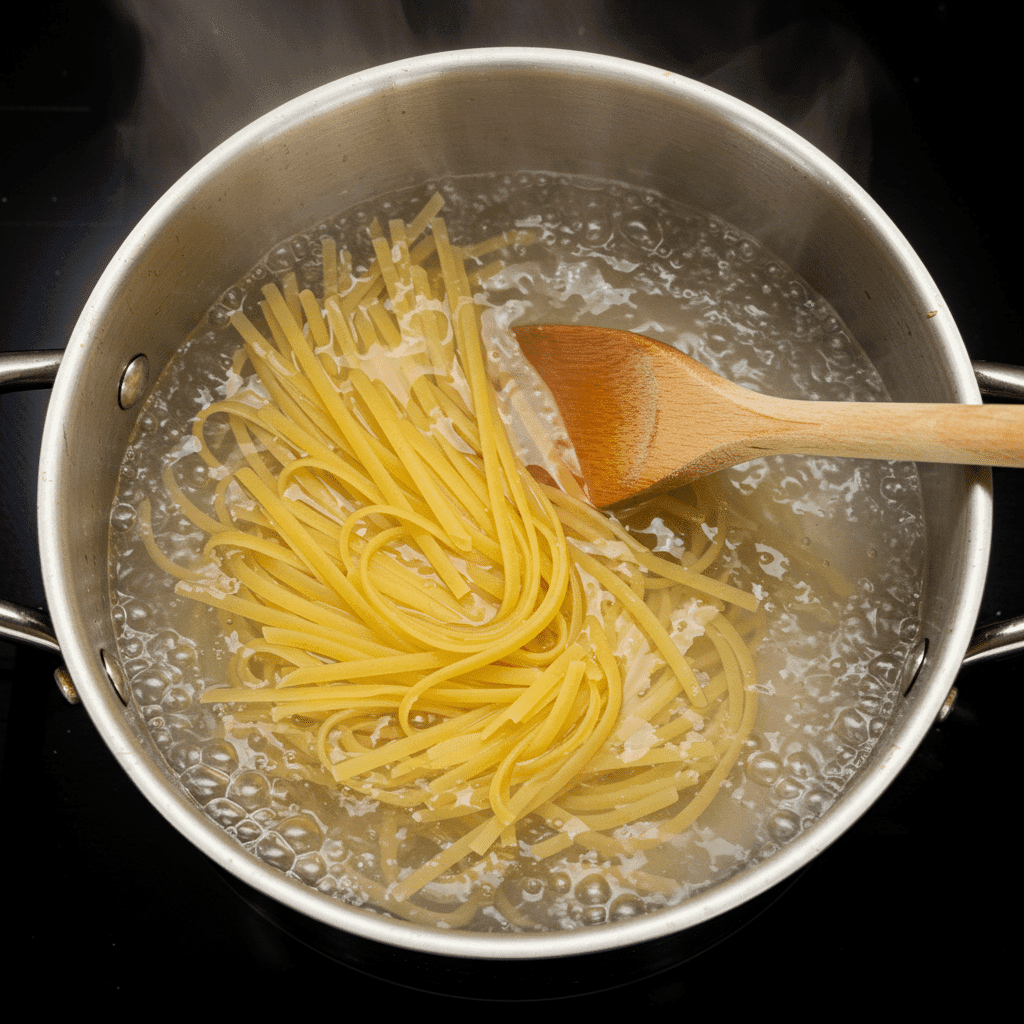
Brown the Beef: In a large skillet over medium-high heat, brown ground beef until no longer pink. Break it apart as it cooks. Drain any excess fat, then add the minced garlic and cook until fragrant, about 1 minute.
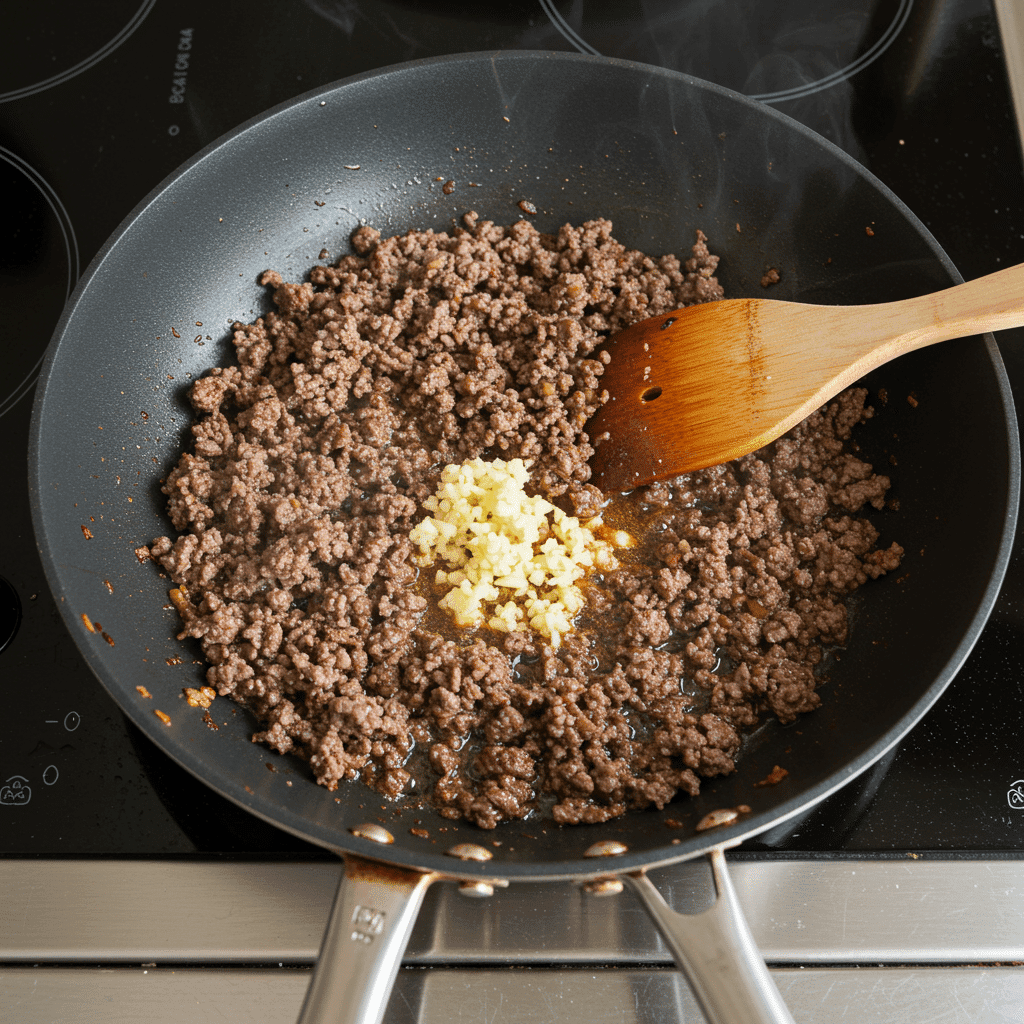
Prepare the Sauce: Add soy sauce, beef broth, brown sugar, hoisin sauce, ginger, red pepper flake, and black pepper to the skillet. Stir everything together to combine well.
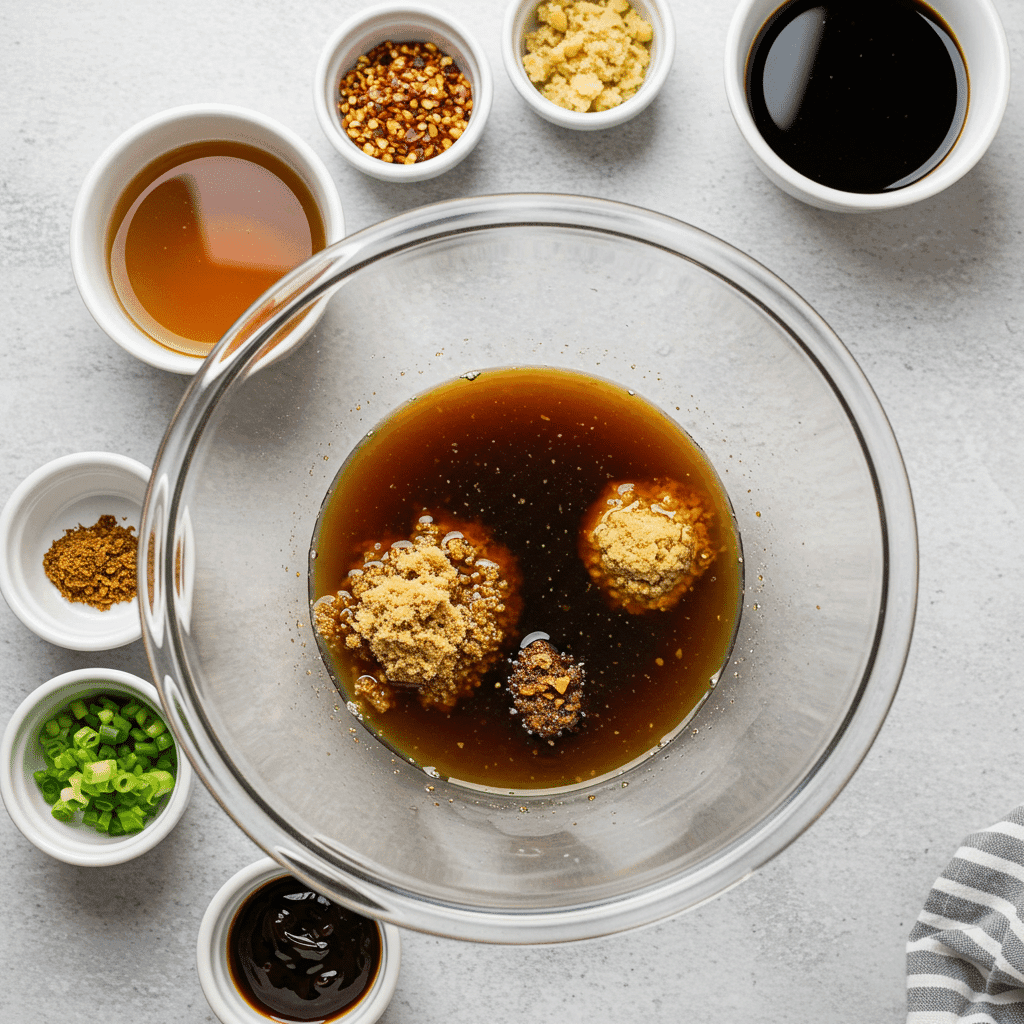
Thicken the Sauce: In a small bowl, dissolve the cornstarch in 2 tablespoons of cold water to create a slurry. Pour the slurry into the skillet with the beef and sauce. Stir and bring the mixture to a gentle boil, allowing the sauce to thicken.
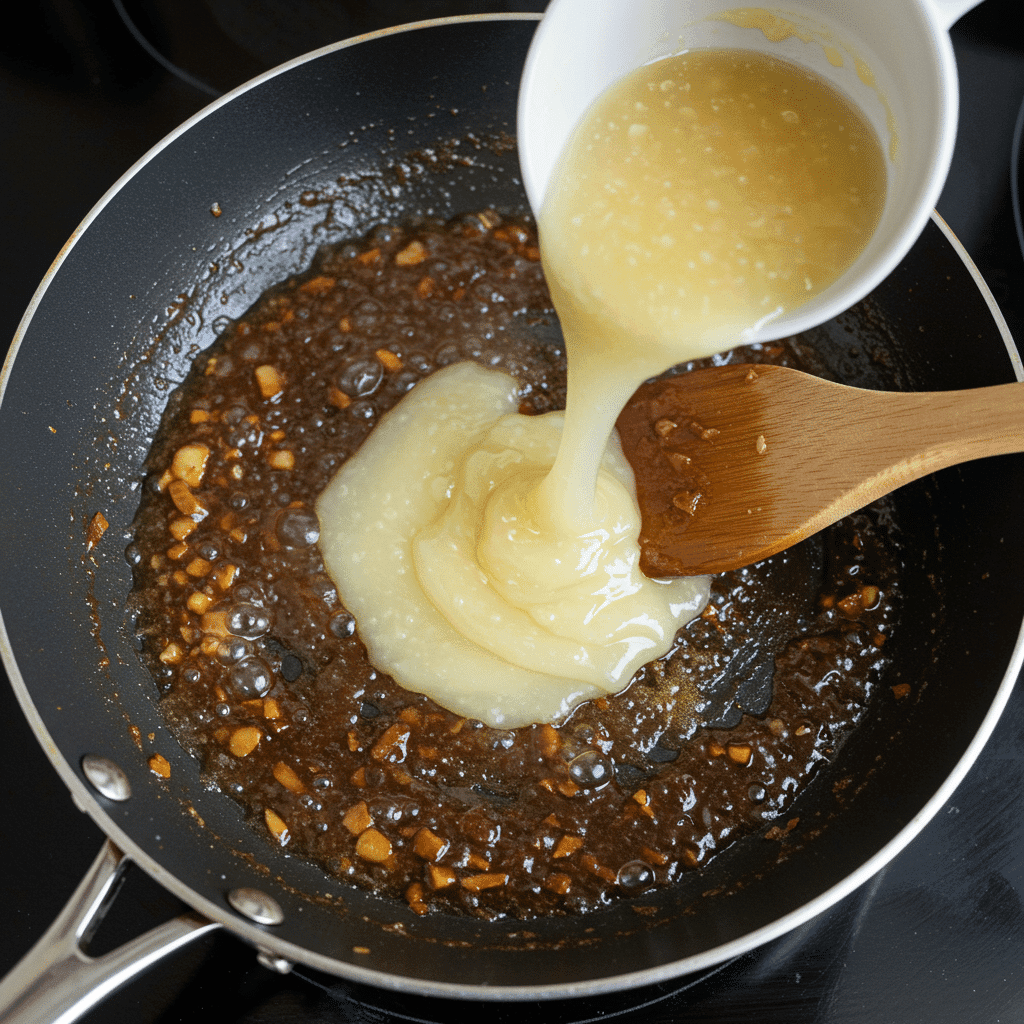
Combine with Noodles: Once the sauce has thickened to a glossy consistency, add the cooked noodles to the skillet. Stir to coat the noodles completely. Let them sit in the sauce for 2-3 minutes to absorb the flavor.
Serve: Top generously with freshly sliced green onions and serve immediately. Enjoy!
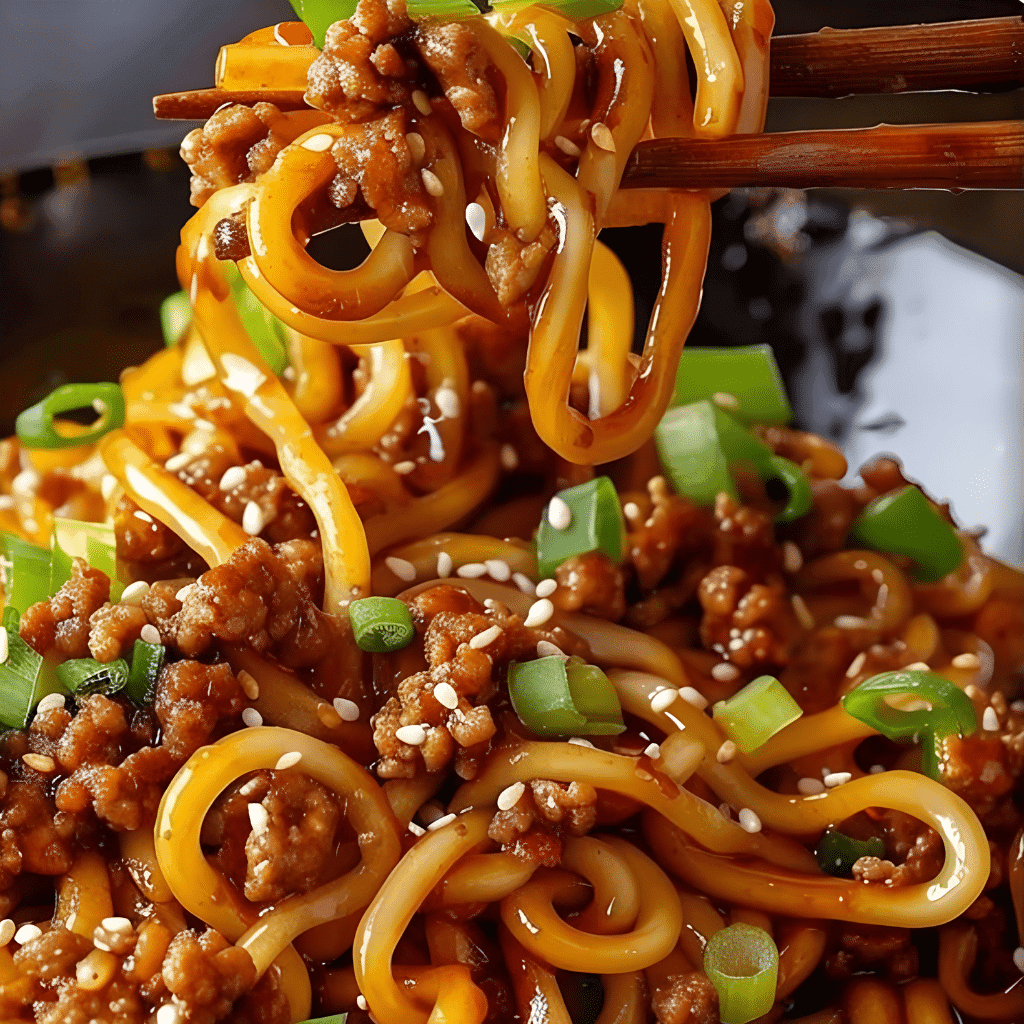
« The key to a great sauce is the cornstarch slurry. Dissolving it in cold water first prevents lumps and ensures a perfectly smooth, glossy finish every time. » – Expert Chef Quote
Beyond the Basics: Easy Variations & Customizations
One of the best things about this Asian ground beef recipe is how easily it can be adapted. Don’t be afraid to make it your own!
- Protein Swaps: Not in the mood for beef? This recipe works wonderfully with ground turkey, ground chicken, or even ground pork.
- Vegetable Additions: Boost the nutritional value by adding vegetables. Broccoli florets, sliced bell peppers, shredded carrots, or snow peas are all fantastic additions. Add them to the skillet for a few minutes before you create the sauce to cook them until tender-crisp.
- Noodle Alternatives: For a low-carb option, serve the Mongolian ground beef over zucchini noodles or cauliflower rice.
- Spice It Up!: If you like more heat, add a teaspoon of sriracha or chili garlic sauce along with the other sauce ingredients.
Frequently Asked Questions (FAQ)
What can I use instead of ground beef?
You can easily substitute ground beef with other ground meats like turkey, chicken, or pork. For a vegetarian option, crumbled firm tofu or tempeh would also work wonderfully with the sauce.
What are the best noodles for this dish?
This recipe is very versatile. While linguine is a great choice, you can also use lo mein, udon, ramen, spaghetti, or even rice noodles. The key is to choose a noodle that can hold up to the rich sauce.
How do I make the sauce thicker?
The cornstarch slurry is the key to a thick and glossy sauce. Make sure the cornstarch is fully dissolved in cold water before adding it to the skillet. Bringing the sauce to a gentle boil will activate the cornstarch and thicken it properly.
Is Mongolian Beef actually from Mongolia?
No, it is not. The dish is a Taiwanese creation from the 1950s. The name was likely used for its exotic appeal to attract customers.
Conclusion: Your New Go-To Weeknight Meal
This Mongolian Ground Beef Noodles recipe is more than just a meal; it’s a solution. It’s the answer to the dreaded « what’s for dinner? » question, a reliable and delicious option that bridges the gap between a desire for something flavorful and the need for something fast. With its rich history and endlessly customizable nature, it’s a dish that’s sure to become a permanent fixture in your recipe rotation.
So, what are you waiting for? Gather your ingredients, fire up the stove, and prepare for a true flavor explosion. We’d love to see your creations! Try the recipe this week and leave a comment below to let us know how you liked it!
